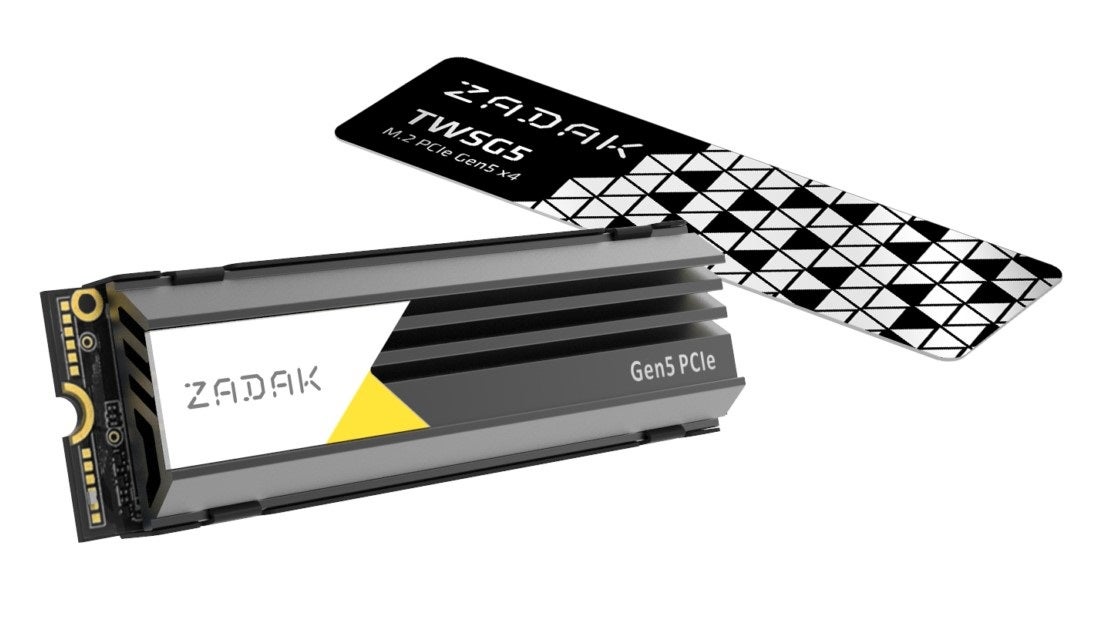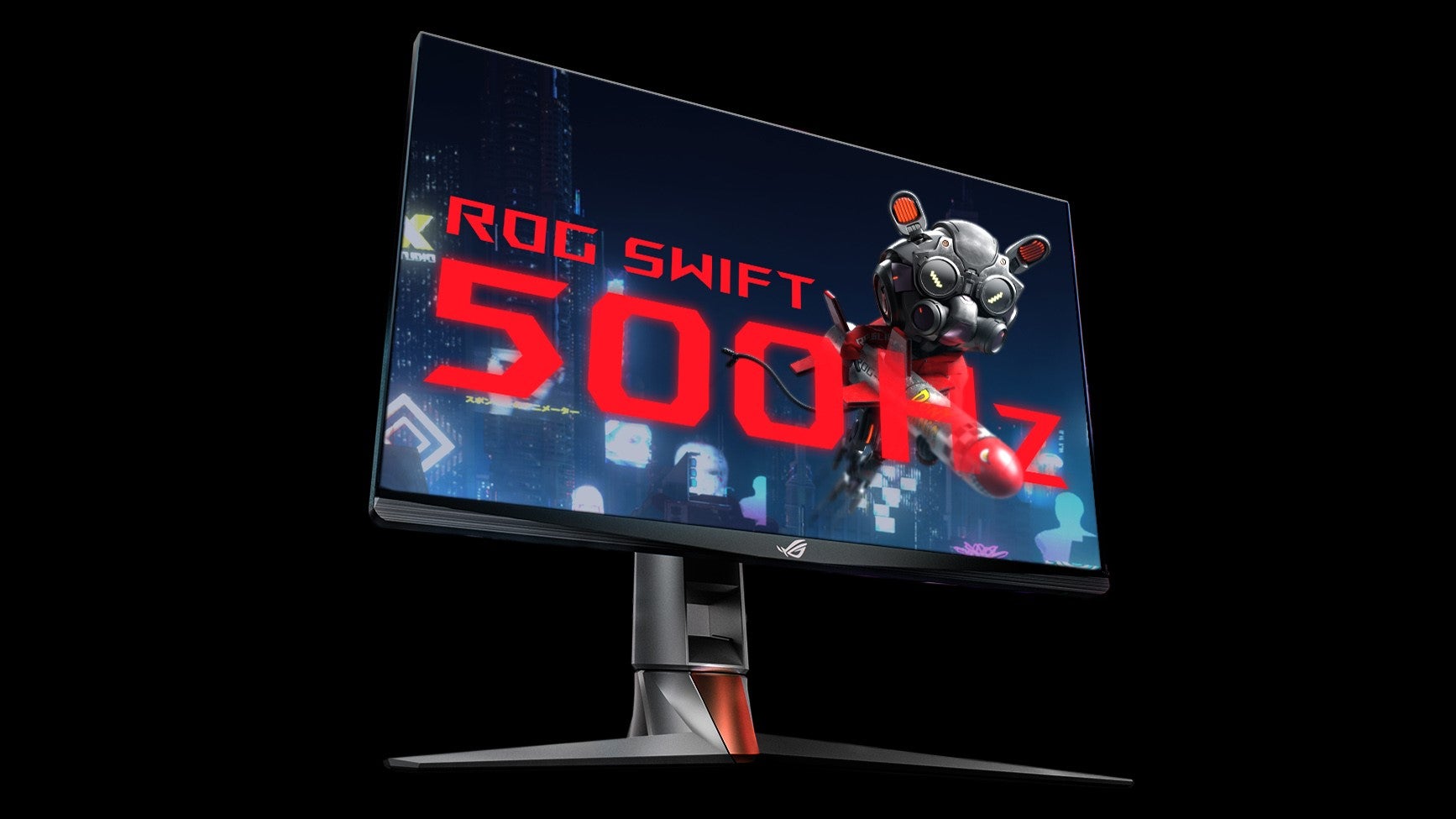That said, this year’s show wasn’t a bust either: there was fresh AMD Ryzen 7000 info, Corsair’s first crack at a gaming laptop and, at long last, some PCIe 5.0 SSDs you can actually buy. One day. In the future. That’s in addition to the wackier, moon-shooting tech on display, without which it just wouldn’t be Computex. So, in descending order - from the interesting and sensible to the blinking ludicrous – here are the PC gaming highlights from Computex 2022.
AMD Ryzen 7000: a closer look at the next-gen CPUs
Having used January’s CES 2022 to announce the Ryzen 7000 series, AMD rocked up to Computex with their first meaty details on the upcoming CPUs. The 7000 chips will rely heavily on a new Zen 4 core design to catch up to Intel’s best gaming CPUs, with higher clock speeds and a more efficient 5nm manufacturing process. AMD didn’t name or price any specific models, but did demo a 16-core Ryzen 7000 chip that could boost up to 5.5GHz - equalling the max speed of Intel’s premier Core i9-12900KS processor. Ryzen 7000 will also get AMD’s desktop lineup up to date on connectivity and peripheral support, with DDR5, PCIe 5.0, and 2x2 USB 3.2 compatibility all coming as standard. Between switching to the AM5 socket and simply needing new chipsets, you won’t be able to install a Ryzen 7000 part in any existing AMD motherboard, though the three announced mobo chipsets – X670E, X670 and B650 – all support at least some degree of overclocking and PCIe 5.0 capability. Expect an autumn 2022 launch.
Apacer AS2280F5 and Zadak TWSG5: the first PCIe 5.0 SSDs
The Ryzen 7000 family will join Intel’s 12th Gen desktop CPUs in offering PCIe 5.0 support, but there’s just one problem: there aren’t really any PCIe 5.0 peripherals to buy. However, first blood on the SSD side goes to Apacer, who announced two upcoming M.2 drives (including one under their Zadak gaming label). Both the Apacer AS2280F5 and the Zadak TWSG5 claim the same 13,000MB/s sequential read speed and 12,000MB/s sequential write speed, more than double what the current best SSDs can handle over PCIe 4.0; the main different seems to be the TWSG5’s sextra heatsink option, a much thinner graphene strip. Sadly, that’s about it for details: Apacer didn’t reveal any capacities, release dates or prices. I’m guessing they won’t be cheap, as PCIe 4.0 SSDs still tend to be much pricier than PCIe 3.0 models, though those speeds sound pretty fearsome indeed. 13,000MB/s is about 23 times faster than a good SATA SDD! Mad stuff.
Corsair Voyager a1600: a super-slim gaming laptop debut
Computex 2022 saw Corsair launch their first ever gaming laptop, the Voyager a1600, and for a first attempt it looks like a dead serious piece of kit. The 16in display combines a higher 2560x1600 resolution with a higher 240Hz refresh rate, the keyboard is fully mechanical with low-profile Cherry MX switches, and the chassis is only as thick as the most recent Razer Blade 17. Which is to say, not thick. Not thick at all. Like the Xeneon 32QHD165 monitor, Corsair’s other recent attempt to diversify its hardware output, the Voyager a1600 ain’t cheap. No UK pricing yet but with two versions set to sell for $2700 and $3000, it will need to offer more than just a pretty specs list. Which, speaking of, also includes an AMD Radeon RX 6800M graphics processor and either an AMD Ryzen 7 6800HS or Ryzen 9 6900HS. Both all-AMD configs will also unlock various “AMD Advantage” features, like Smart Access Memory.
Asus ROG Swift 500Hz: mate, that’s a lot of hertz
Behold the ROG Swift 500Hz, which was introduced during Nvidia’s keynote as the “lowest latency, highest refresh rate G-Sync esports display ever.” Which is hard to argue with, partly because nobody’s ever had the gall to create a 500Hz monitor before. It’s actually quite modest in some regards – the resolution is 1920x1080, it’s only 24in diagonally, and it uses a TN panel – but it’s all in service of pure speed. It’s unlikely you’d get 500Hz out of a contemporary IPS panel, for one thing. Still… I dunno, readers. To me it sounds like the lowered latency might be a more tangible benefit than that refresh rate, even for the kind of hyper-paced competitive FPS play that the ROG Swift 500Hz is designed for. Don’t believe naysayers who claim there’s no visible difference between 60Hz and 144Hz, but anything above 240Hz or so provides such drastically diminished returns that it’s hard to imagine 500Hz being worth the money. Not that any pricing was confirmed, mind.
Geil Evo V DDR5 RGB Hardcore Gaming Memory: RAM wot’s got fans in it
I’ll say this for Asus’ 500Hz screen: even if it’s unnecessary, it doesn’t possess true, crackling, white-hot “why though” energy. Not like Geil’s Evo V DDR5 RGB RAM, which appeared at Computex 2022 toting its own little active cooling system. That means tiny, RGB-festooned fans on each module, which suck in cool air to chill the memory while forcing out warm air through vents in the middle. “This FANtastic design makes what was once considered impossible become reality,” according to the marketing copy. So maybe I’m just being obtuse, and putting fans on RAM sticks is actually a moment of Wright Brothersian brilliance? But it’s unclear if this DDR5’s overclocking advantage will have quite as many applications as heavier-than-air-flight. We’ll find out for sure in July, when the Evo V DDR5 RGB goes on sale.

